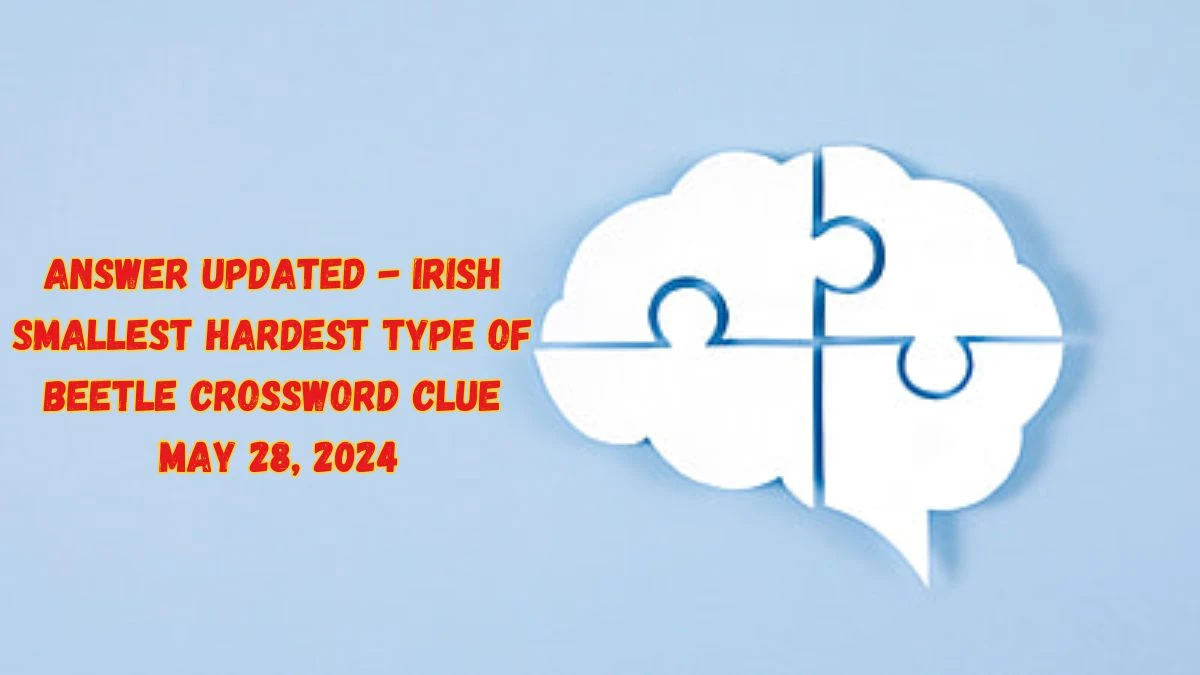Answer Updated - Irish Smallest Hardest Type of Beetle Crossword Clue May 28, 2024
by
Updated May 28, 2024

Irish Smallest Hardest Crossword
"Irish Smallest Hardest" in the context of a crossword puzzle likely indicates a theme or clue related to words or phrases associated with Ireland, smallness, or toughness. It could involve finding words or phrases that fit these criteria within the puzzle grid. The theme might play with stereotypes or expectations, offering a humorous twist or challenge to solvers.
Type of Beetle Explanation
"Type of Beetle" refers to a specific species or classification within the order Coleoptera, which includes beetles. Beetles are a diverse group of insects characterized by their hard outer wing cases called elytra and chewing mouthparts. There are countless species of beetles found worldwide, occupying various habitats and exhibiting a wide range of sizes, shapes, colors, and behaviors.
Hints to Finding the Answer
- Insect
- Hard outer wing cases
- Chewing mouthparts
- Order Coleoptera
- Diverse group
- Found worldwide
- Ladybug is one example
- Rhinoceros beetle is another example
Possible Answers
- LADYBUG
- RHINOCEROS
Answer
The answer to the Type of Beetle Codycross is STAG.
Related Irish Smallest Hardest Crossword Clue Answers Today
- Goods consignment (abbr) (4) - SHPT
- S Afr weaver bird (4) - TAHA
- Variety of skunk (4) - ATOK
- The cheek (anat) (4) - GENA
- Dislike intensely (4) - HATE
- Sound unit (4) - PHON
- Bangladesh currency (4) - TAKA
Answer Explanation
"STAG" typically refers to the stag beetle, which is a type of beetle belonging to the family Lucanidae. Stag beetles are characterized by their large size and distinctive mandibles, which resemble the antlers of a stag, hence the name.
They are among the largest beetles found in many regions and are known for their impressive appearance and mating behaviors. Stag beetles are found in various parts of the world, with different species inhabiting different habitats, but they are most commonly associated with wooded areas where they feed on decaying wood and tree sap.